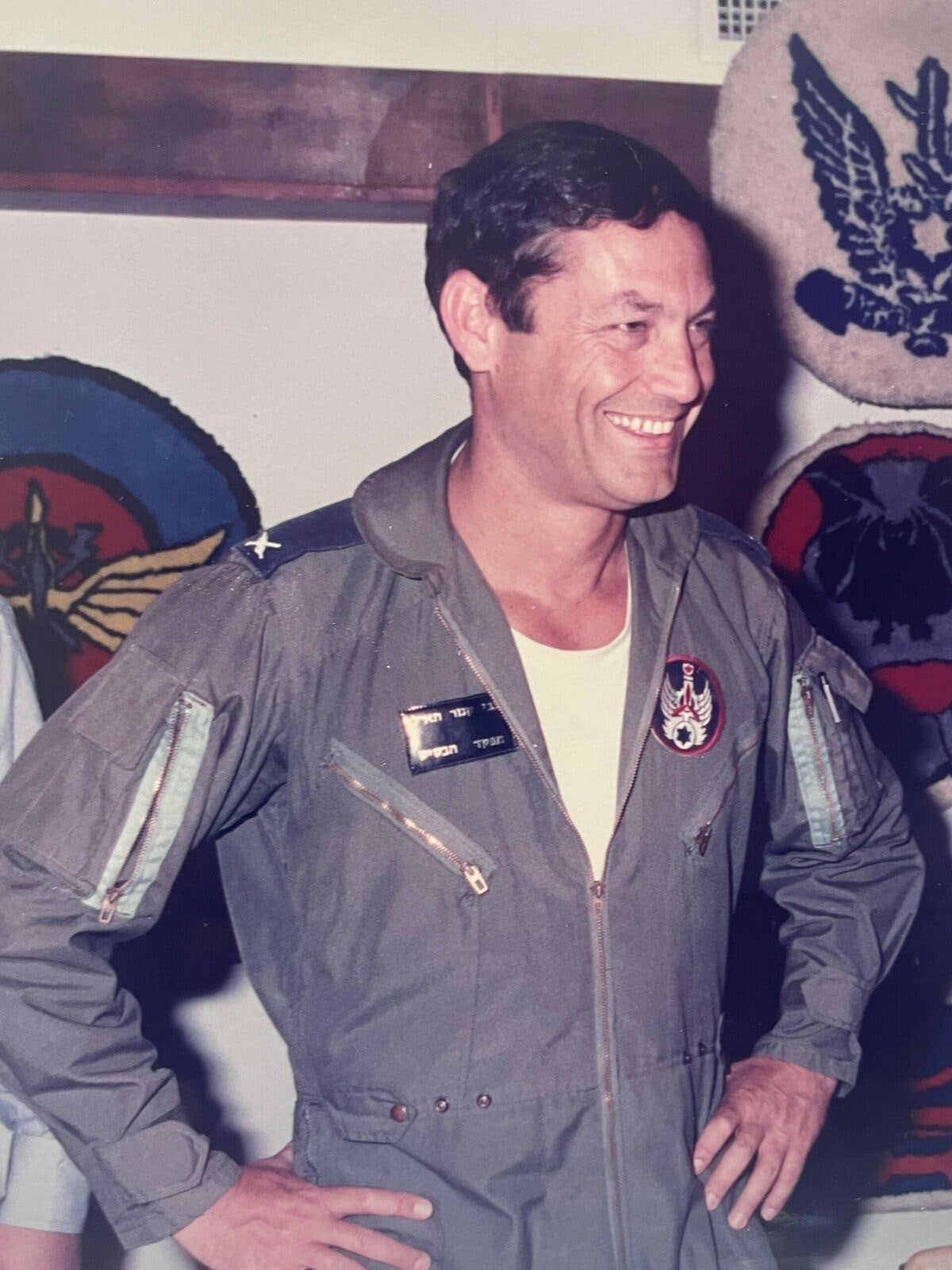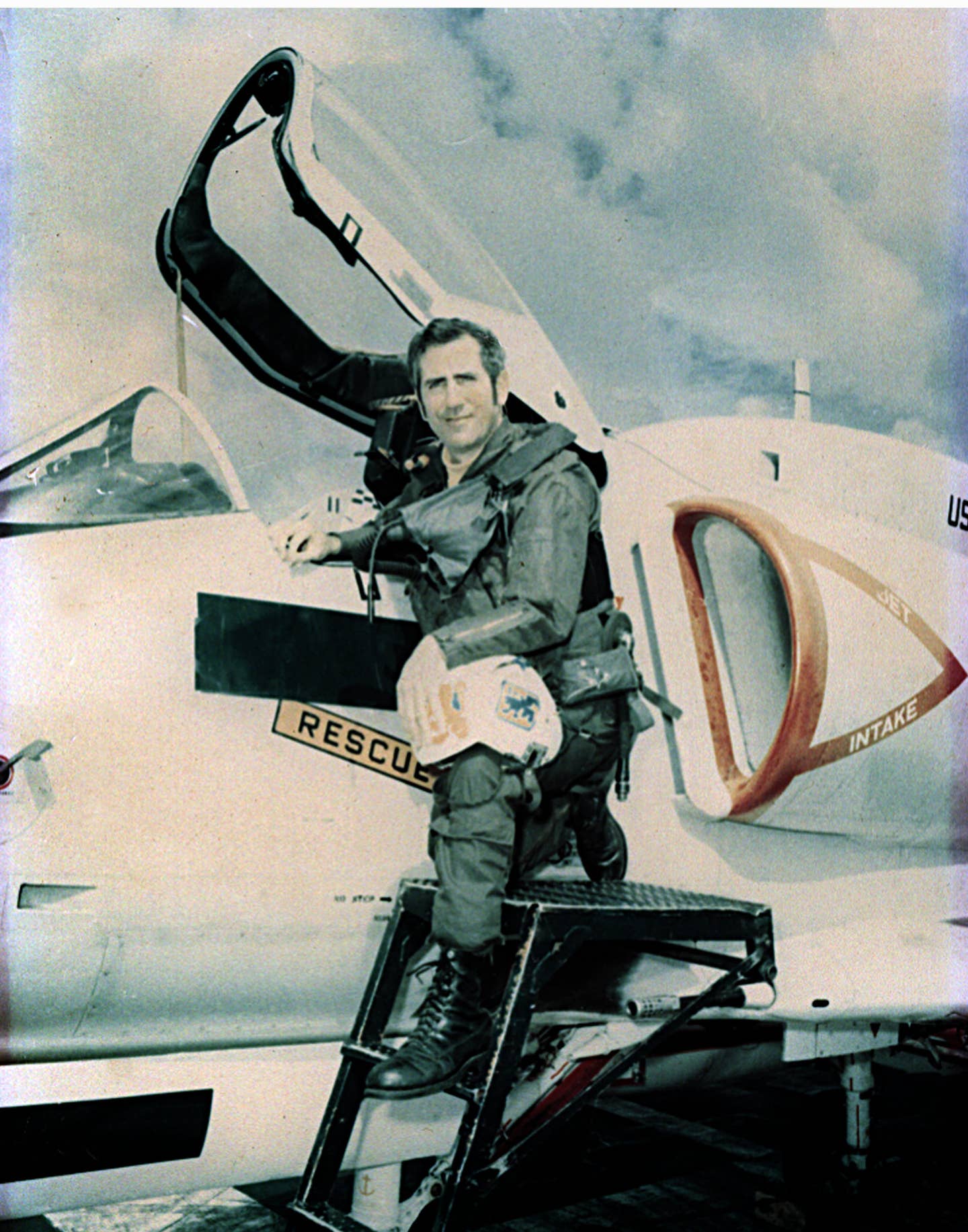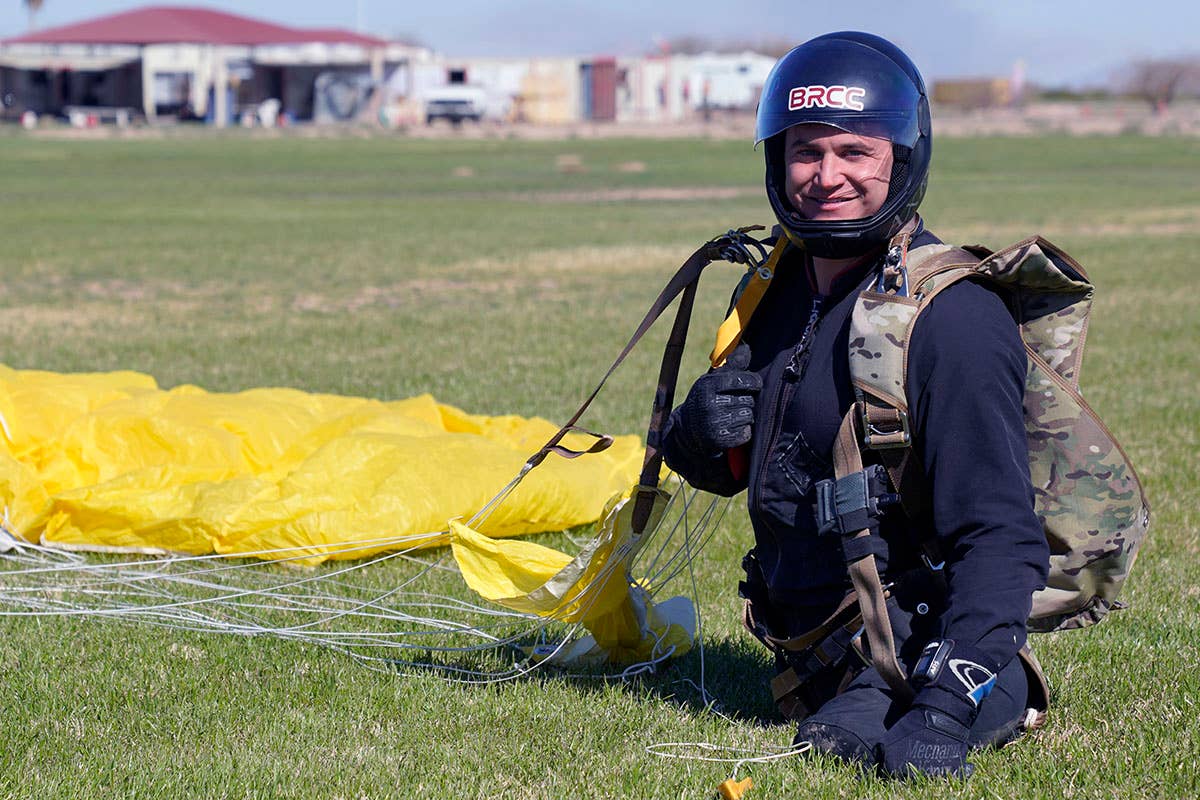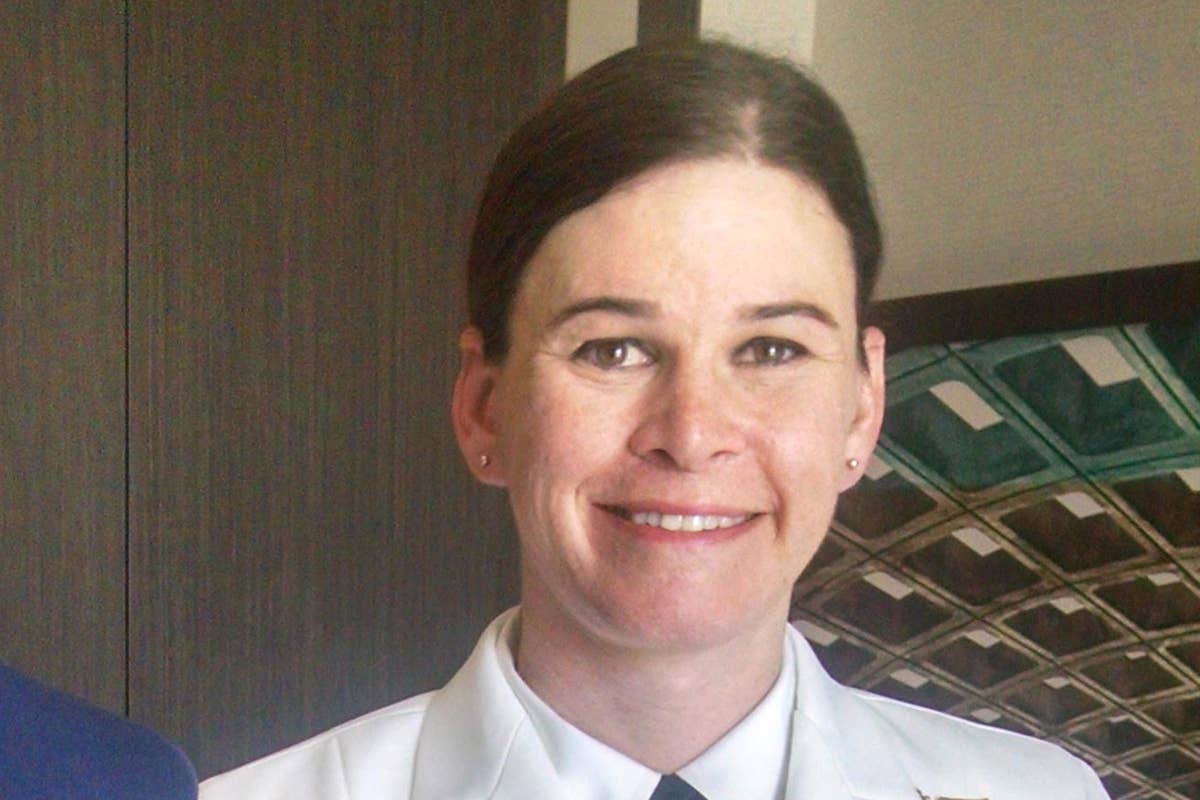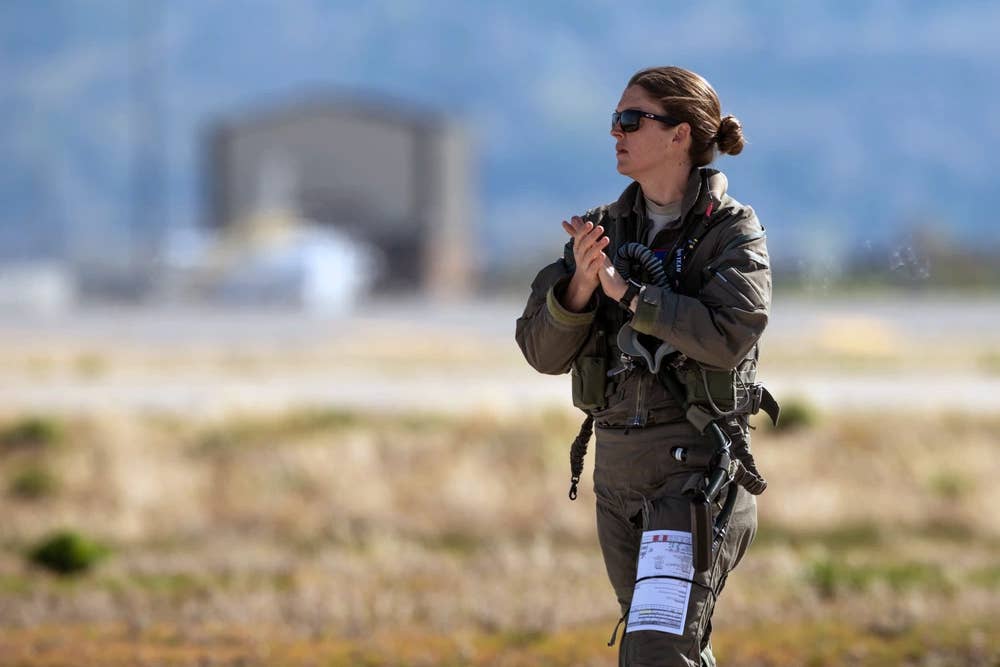
Second-generation USAF fighter pilot Maj. Kristin “Beo” Wolfe is commander of the F-35A Demonstration Team, 388th Fighter Wing based at Hill Air Force Base, Utah. [U.S. Air Force photo by Capt. Kip Sumner]
Editor’s Note: When pilot Maj. Kristin "Beo" Wolfe finished F-22 pilot training in 2013, she became the second-generation U.S. Air Force fighter pilot in her family. Trained to fly both the F-22 Raptor and the F-35A Lightning II, she now sets the bar for flying the service's single-seat stealth combat aircraft as commander of the F-35A Demonstration Team, 388th Fighter Wing based at Hill Air Force Base, Utah. Her aerobatics were featured in the service's “Own The Sky” commercial, which is paired with Top Gun: Maverick in theaters. She recently sat down to chat with FLYING, recalling her first flight in an F-35, what it's like being a female fighter pilot and how the reality of flying fifth-generation fighters differs from cinematic portrayals. Here are her words, lightly edited for space and clarity.
I flew the [F-22] Raptor first. That airplane's a little more impressive on takeoff. The first time you take off in those airplanes, it's you alone in the cockpit. They don't have any two-seater models. I think flying a really advanced, powerful fighter for the first time, especially by yourself not having an instructor inside with you—they're actually in another plane, on the radio with you—is a pretty cool experience.
We, of course, have a lot of emergency procedures, training and the simulators prior to being allowed to, you know, step foot, or even take off in one of those airplanes. Generally, you've got at least a handful of takeoffs and landings under your belt before you're allowed to do it in real life. So that training just takes over. And it becomes, you know, very focused on habit patterns and stuff, you've learned to bring the airplane safely back. It's kind of a whirlwind. And then every time after that, you know, you get to enjoy the moment. It feels like you're flying a roller coaster sometimes, taking off and landing at 150 miles an hour.
Anytime you fly an airplane for the first time, the whole purpose is to get the lay of the land and feel what the airplane feels like. The profiles and anytime we go out in an airplane—in at least a military airplane—we have very specific what we call learning objectives for that day. So that includes, you know, doing some advanced handling with the airplane, just seeing basic turns, loops, how the airplane feels and flies at different altitudes, low speed, high speed. So that's generally your first take flying the airplane. You come back over to the field, you know, doing some little approaches before you're actually allowed to, you know, land it for the final time. That's a general profile with the instructor alongside you leading you through it.
The acceleration isn't like getting shot off an aircraft carrier, so it's not that aggressive. It's not like zero to 150 in a couple seconds. It's definitely an acceleration, you know, pushed back in the seat a little bit. But, you've seen the sight picture and done it, you know, like I said, 10 to 20 times in that simulator, so you've seen what it feels like. But you add in the noises and the feels and the rumbles. It's probably what you would assume is going from—in a racecar—going from zero to 150 to take off as well. So, there's definitely the acceleration, you feel the power of the motor right under you.
How does the reality of flying a fighter jet differ from the Hollywood treatment?
I haven't seen Top Gun: Maverick. Hopefully, they're trying to make it as realistic as possible. But you know, there's a lot more than just dogfighting other airplanes and wildly maneuvering the airplane. That makes for good TV, [but] there's a lot of different things that go on, you know, in real life. … The fighting in relation to other airplanes is more a thing of the past, at least for the fifth-generation fighters that I fly. Our goal as a fifth-generation fighter is to be stealthy, which means you're detecting and shooting missiles at people way before they even know you're there, way before they can even target you and shoot back. That all happens basically in straight-level flight. You know, getting high and fast to shoot the missiles. It's not as wildly aggressive of maneuvering that makes for good TV. So that's a lot of what people don't see.
What was it like to film the commercial?
It was a good time. We had all four demo teams out there to film together. [We were] working with a civilian production company in an airplane, which is a little bit difficult to get on the same terminology when you're talking about civilian and military flying. They're talking about, you know, cinematography, things that they want to see and what they want to, they want you to do and try to translate that into military terms, to both, you know, comprehend that, tell them what we can and can't do, what would maybe look more realistic than what they're trying to get. But ultimately, I think it turned out some really good footage of all the airplanes showing off what at least the fighter side of aviation can do.
Your dad was a fighter pilot. How did that inspire your career choice?
I was born on an Air Force base and moved around throughout his assignments. So [after] moving around every couple of years, I was very used to that military lifestyle. As a kid running around through fighter squadrons, at all the social events, it was just a thing that me and my siblings did. It was a very normal way of life, of being involved in like that, that Air Force fighter pilot, fighter squadron mentality. That was a familiar thing for me. I honestly didn't think about joining the Air Force or even being a pilot till much, much later in college. For me, it was you know, very familiar with moving around, it was something I actually enjoyed versus living in one spot for an extended period of time. I figured, you know, the military might be a right fit for me. I started researching options from there, and eventually found my way towards the Air Force and then applying for a pilot slot. There wasn't a "must fulfill this legacy of being a fighter pilot" sort of thing. That was never pressured from myself or for my parents. It's just something that seemed to fit my personality and lifestyle the best as I found my own path later on.
What's it been like as a female aviator in a male-dominated career field?
It's honestly a non-event. It's a very rank-based structure, it's very skill-based. Obviously, we've been opening up more and more jobs to women as we go along, but the standards are exactly the same. As long as you can do your job, fly the airplane, know the tactics, you know, perform exactly as well as the men, that's all anybody cares about. Because they want to take the best people to war. Everybody wants the best wingman beside them. They really don't care what they look like, what they sound like, where they came from, or you know, what they've been through. It really just matters if you can perform at the end of the day.
What did your dad say when you told him you were joining the Air Force?
I think he was probably excited, just to be able to talk to someone about the military and aviation and fighters and all that. That's something that he enjoys. And it's a common ground that, obviously, we can talk about now—how things have changed and how things are exactly the same.
What's the demo team pace like?
“What you see at airshows is very different from what the rest of the combat Air Force is doing every day when they start training for threats.”
In the Air Force, people are mostly familiar with the Thunderbirds and the Blue Angels. Those are multi-ship, they're flying up to six airplanes at a given time very close together. The Air Force also has four single-ship demo teams, where we fly one airplane at an air show in about a 15-minute routine. We do 15 minutes, all to narration of music. [We] travel around the country, sometimes internationally to air shows, to really show off the airplane.
Our whole mission of demo teams and air shows, in general, is to recruit people to take our place one day. There's one pilot flying at a time, but there's also a team of maintainers behind me, making sure the airplane is safe and ready to fly. It can be a quick pace kind of thing as you're going from airshow to airshow to airshow three weekends in a row. It's a lot of traveling. But it's also a lot of fun to get to see different places of the country.
We don't listen to any music while we're actually flying because I've got earplugs in and because the airplane's pretty loud in there. We're listening to about three radios up at any given time. I'm either talking to who we call the air boss who's running the air show. I talk to my pilot on the ground, who's called my safety officer. And then I can talk to a warbird, a World War II or similar airplane that we fly with, as well. So, I've got those frequencies up. My maintainers on the ground do run a soundtrack to the airshow, and each maneuver gets its own given song to a variety of different types of music, depending on what fits with the maneuver or fits into the local airshow vibe of what people want to hear.
What you see at airshows is very different from what the rest of the combat Air Force is doing every day when they start training for threats. My squadron just got back from Germany, [after being deployed] for three months doing the whole Russia-Ukraine sort of thing. So what they're doing every day is extremely different from what I'm doing in front of an airshow doing aerobatics very close to the ground. They're doing very serious things.

Subscribe to Our Newsletter
Get the latest FLYING stories delivered directly to your inbox

